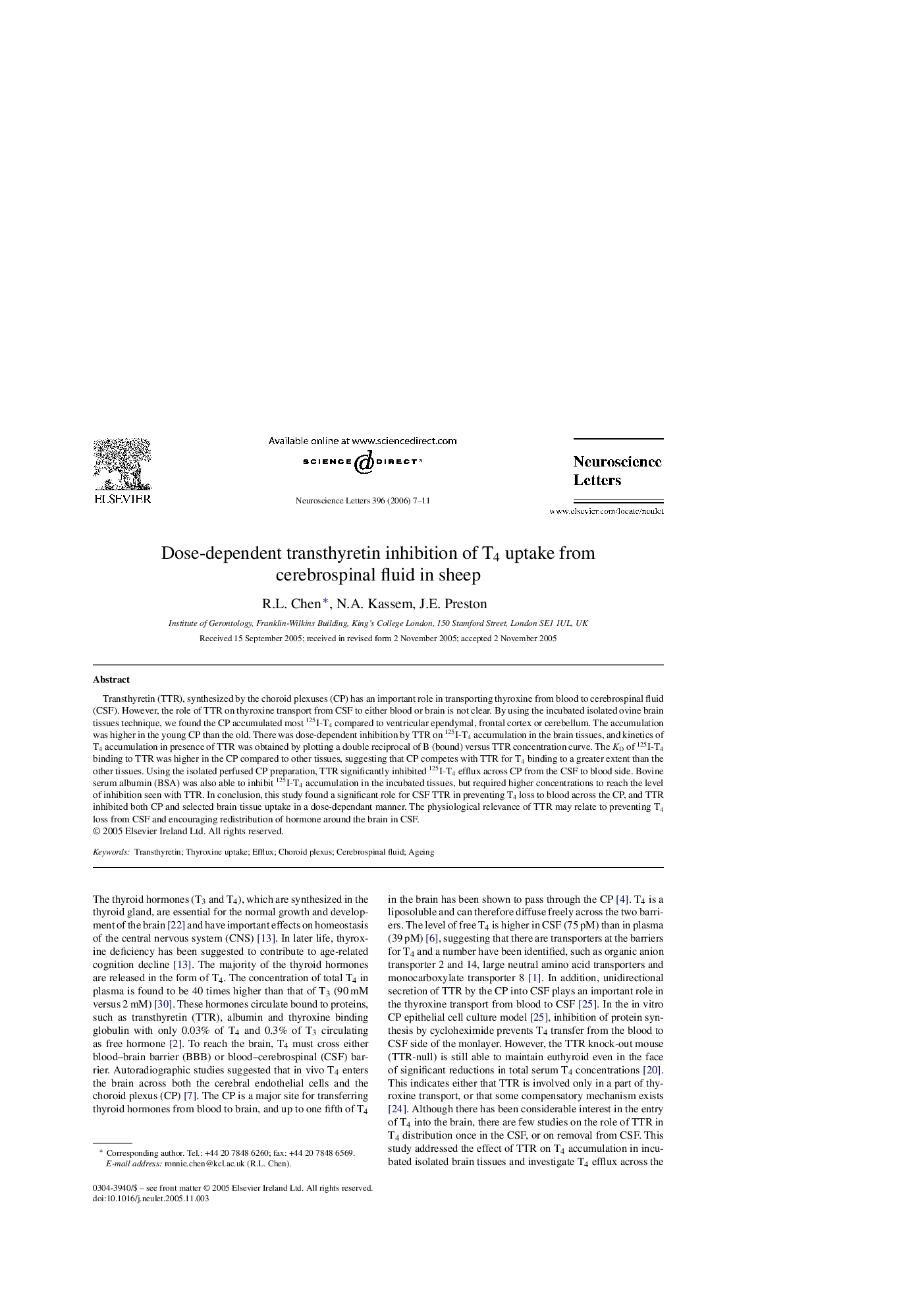| Article ID | Journal | Published Year | Pages | File Type |
|---|---|---|---|---|
| 4351013 | Neuroscience Letters | 2006 | 5 Pages |
Abstract
Transthyretin (TTR), synthesized by the choroid plexuses (CP) has an important role in transporting thyroxine from blood to cerebrospinal fluid (CSF). However, the role of TTR on thyroxine transport from CSF to either blood or brain is not clear. By using the incubated isolated ovine brain tissues technique, we found the CP accumulated most 125I-T4 compared to ventricular ependymal, frontal cortex or cerebellum. The accumulation was higher in the young CP than the old. There was dose-dependent inhibition by TTR on 125I-T4 accumulation in the brain tissues, and kinetics of T4 accumulation in presence of TTR was obtained by plotting a double reciprocal of B (bound) versus TTR concentration curve. The KD of 125I-T4 binding to TTR was higher in the CP compared to other tissues, suggesting that CP competes with TTR for T4 binding to a greater extent than the other tissues. Using the isolated perfused CP preparation, TTR significantly inhibited 125I-T4 efflux across CP from the CSF to blood side. Bovine serum albumin (BSA) was also able to inhibit 125I-T4 accumulation in the incubated tissues, but required higher concentrations to reach the level of inhibition seen with TTR. In conclusion, this study found a significant role for CSF TTR in preventing T4 loss to blood across the CP, and TTR inhibited both CP and selected brain tissue uptake in a dose-dependant manner. The physiological relevance of TTR may relate to preventing T4 loss from CSF and encouraging redistribution of hormone around the brain in CSF.
Related Topics
Life Sciences
Neuroscience
Neuroscience (General)
Authors
R.L. Chen, N.A. Kassem, J.E. Preston,
